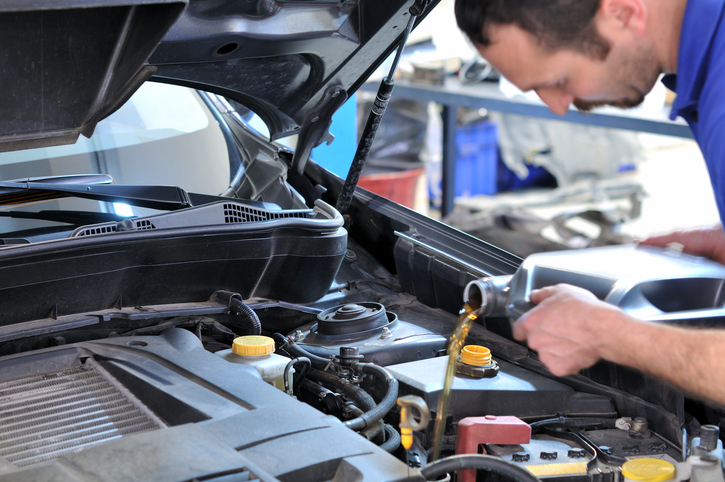An engine oil change is a relatively simple service. It’s widely touted as the single most important part of your car’s maintenance schedule.

There is a good reason for this. Nothing will shorten engine life faster than missed oil changes.
But how can you tell when you should change your oil?
Advances in technology and increased consumer awareness have created some confusion to how often this needs to happen.
The Easy Answer
For most of us, all we need to do is follow the manufacturer’s recommended maintenance schedule for oil change intervals. Their guidelines are designed to keep your car in good running condition for a long time.
Where can you find your car’s service schedule for oil changes and other recommended maintenance?
You can check the owner’s manual that hopefully you have kept in a handy place like your car’s glove box. You might also visit the manufacturer’s website and do a search to download it.
Quick lube shops have their own recommendations. One thing to remember is that these shops are speaking to a wide audience, addressing cars of every age, every mileage, and some with different needs.
While there is no harm done by too frequent oil changes, if your car doesn’t need them, that money could be better spent on other maintenance needs.
Don’t Put It Off
If you have ever put off a trip to the grocery store or waited a couple of weeks longer between haircuts, don’t do that with oil changes.
Your oil’s primary function is to cut friction.
Over time, oil accumulates contaminants and loses viscosity (the ability to flow into every nook and cranny). Contaminants cause friction as parts rub together. Friction wears out those parts faster.
The damage caused by these conditions is largely irreversible without an engine overhaul or replacement.
Waiting for the low oil light to come on can be the worst thing you can do to your engine.
You shouldn’t see that light unless your oil level is low. So you don’t want to see it. Whatever amount of oil you do have left almost certainly has lost its ability to function properly.
The good news is that your service schedule is written to have this service done long before disaster is on the horizon.
Cars are Smarter Now
For a very long time the gold standard for oil changes was 3,000 to 3,500 miles.
There are still many adherents to this philosophy, but it may not be necessary;
Advances in engineering to both engine mechanical parts and especially to oil itself have extended the oil life cycle by more than double the old number.
Do you use synthetic oil?
Automakers recommend it for some models. It cost a little more than regular oil, but it has had the biggest impact on oil life.
The life cycle for synthetics is typically 7,000 to 10,000 miles, a big change from conventional oil.
The type of driving we do also affects our oil change needs;
Frequent cold starts, extreme heat, and towing, are all examples of types of driving that can shorten our oil life.
Also, repeated short trips (under 4 miles) is one of the most overlooked enemies of oil life.
Any of these driving conditions can create the need to shorten your service interval by 25-40% depending on the severity.
If your car is equipped with a maintenance reminder on the dash, some of the guesswork is eliminated for you.
Can you trust it?
For the most part, yes.
In the early days of automobiles the only way we had to track our vehicle’s aging was the odometer. But miles traveled is not always a good indicator of actual use for many urban environments.
With the inclusion of computers in the modern automobile we now have a way for the car to track time AND mileage. Time is important to this discussion because running time affects oil life.
But not all maintenance indicators work the same way:
Some use an electronic sensor to measure the oil quality, while others use an algorithm based on driving metrics to determine life expectancy.
If your car is not equipped with maintenance light or gauge, the owner’s manual should still be your guide.
Don’t Buy Cheap Oil
All of these scenarios assume you are using the factory-recommended lubricant.
If you have opted for something inferior you may be adversely affecting the recommendation.
It’s not worth a few dollars to shortcut on the oil.
Track Your Maintenance
Because time is important as well as mileage, it’s nice to try and plan your service visits.
The little sticker in the corner of the windshield was a small, important innovation to help us plan. Before that, many people kept a paper record in their glove box as well.
But now, with many of us carrying smart phones and having home computers, it’s gotten even easier..
This information can be found on CarFax.com